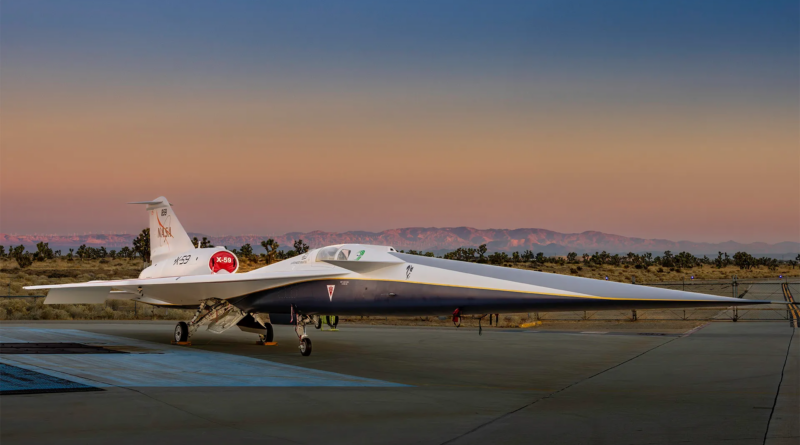The X59, Nasa’s answer to Low Noise Super Sonic Travel.
NASA and Lockheed Martin unveiled the X-59 Quesst, a groundbreaking supersonic research aircraft poised to revolutionize air travel. This sleek, innovative design, meticulously crafted to minimize sonic booms, holds the promise of paving the way for a new era of supersonic commercial airliners.
The X-59’s distinctive features, including its long, slender fuselage and unique nose design, are carefully engineered to reduce the shockwaves that produce the characteristic boom associated with supersonic flight. By disrupting the formation of these shockwaves, the X-59 generates a more subdued sonic “thump” that is significantly quieter and more tolerable for those on the ground.
This groundbreaking technology is the culmination of years of research and development under NASA’s Quesst mission. The X-59’s debut marks a significant step towards making supersonic flight over land a viable reality.
After a series of successful test flights, the X-59 will embark on a crucial mission to gather public perception data. Over the next few years, the aircraft will fly over select communities in the United States, allowing researchers to assess how people perceive the quieter sonic thump and its impact on their daily lives.
This data will be invaluable in informing regulators and policymakers as they consider lifting the current ban on supersonic flight over land. With the X-59’s potential to significantly reduce the disruptive effects of sonic booms, the door could soon be open for a resurgence of supersonic travel, offering travelers faster and more efficient journeys across the globe.
The introduction of the X-59 Quesst is not just a technological breakthrough; it represents a paradigm shift in public perception towards supersonic flight. By demonstrating the feasibility of quieter supersonic travel, NASA is breaking down the barriers that have long hindered its widespread adoption.
As the X-59 continues its journey to revolutionize air travel, it holds the promise of ushering in a new era of supersonic transportation, one that is not only faster but also more environmentally conscious and socially acceptable. With the X-59 paving the way, the future of supersonic travel looks increasingly bright, offering a glimpse of a world where we can seamlessly connect across continents in a fraction of the time.
From here Nasa hopes that aviation wil pick up this design and there findings to use it in commercial super sonic solutions.
More information: https://www.nasa.gov/mission/quesst/

